Stepping into Tai Shani’s installation at this year’s Turner Prize exhibition feels a bit like plunging through a portal. A giant, disembodied green hand emerges from a red velvet sleeve on to the floor, palm upwards as though to beckon you in; above it rises a futuristic cityscape, with supple pink columns supporting a structure of bulbous pink bowels and phallic shapes. At once oddly comforting and utterly alien, the place is a realisation of the setting for DC: Semiramis, the sequence of 12 performances for which Shani has been nominated.
Shani’s scripts for this work also begin with a kind of portal – a wall that ‘extends in all directions’ in front of the narrator, before transforming into a ‘flesh membrane’, through which she slowly pushes herself to arrive in a utopian city of women, named after the legendary Queen Semiramis of Assyria and derived from sources as varied as Christine de Pisan’s Book of the City of Ladies (1405) and sci-fi writers such as the novelist and poet Marge Piercy. An abridged version of the scripts is read in this installation by a floating female head on a screen. With language that is by turns hypnotic, erotic and nonsensical, the work is wilfully arcane – but perhaps it has to be. Its power to envelop depends, in part, upon our knowledge of all that has been left behind on the other side of the wall.
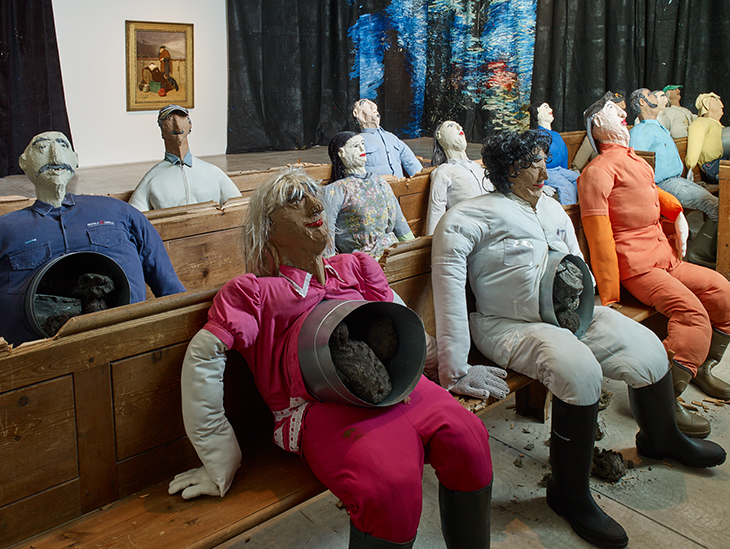
Installation view of Collective Conscience by Oscar Murillo at the Turner Prize 2019 exhibition at Turner Contemporary, Margate. Photo: David Levene; © the artist
All of the four nominees question, in one way or another, the nature of the walls that divide and enclose us; a reflection, perhaps, of the times, but it also means that the exhibition at Turner Contemporary in Margate has a greater purpose and power than it has had for several years. In one of the galleries, the wall-to-wall bay window – which normally yields the same view of North Sea and grey sky from which the namesake of both prize and gallery used to draw comfort and inspiration – has been blacked out by Oscar Murillo with a vast, un-stretched linen canvas, covered in the Colombian-born artist’s characteristically frenzied, scumbled paint marks. Before this makeshift curtain sit several rows of papier-mâché effigies on rickety pews. They are of the type that, in Colombia, are set alight in celebration of the New Year; here they sit gawping at the covered window. For Murillo, their stolid forms represent the violence visited upon workers under a capitalist system, closed off from the light of a world that yet creeps in here, just above their frozen gaze, through a chink in the cloth.
Midway through The Long Note – the film at the centre of Helen Cammock’s exhibition – appears a mural in Derry depicting the faces of Nelson Mandela and the republican dissident Bobby Sands. Combing its way slowly through the streets of the city with a mix of archival and newly recorded footage, the film repeatedly pauses to dwell on such moments. Intercut with the footage of Derry is a series of interviews with Bernadette Devlin McAliskey, who reflects upon her part in the civil rights movement in the late 1960s; the film is first and foremost an attempt to weave her story back into the fabric of her city. But the film also touches on other histories – that of Betsy Gray, a Scots Presbyterian killed in the Irish Rebellion of 1798, or of the black feminists to whom Devlin McAliskey looked across the Atlantic, fighting for civil rights in America. Wiping the rain from the camera lens, or shuffling through photographs and documents, the hand of the artist appears throughout the film, breaking through the fourth wall to offer a comforting reminder that disputed histories can be reclaimed.
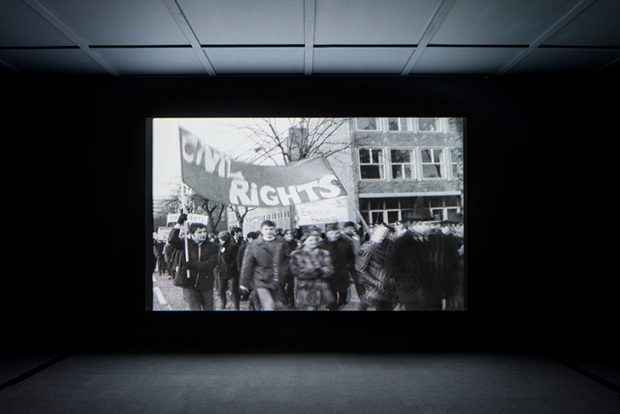
Video still from ‘The Long Note’ (2018) by Helen Cammock at the Turner Prize 2019 exhibition at Turner Contemporary Margate. Photo: David Levene; © the artist
By contrast, Lawrence Abu Hamdan seals himself off from the viewer at the outset of his film and sound installation Walled Unwalled. He appears in a soundproofed recording studio – yet his voice comes through clear as day as he relates a series of seemingly unrelated stories: of Danny Lee Kyllo, who grew ‘the best weed in Oregon’ before police detected his botanical heat lamps by training a thermal camera on his walls in the early 1990s; Oscar Pistorius, whose defence during his trial for murder rested on whether or not he had identified the voice of his girlfriend Reena Steenkamp through a wall before he shot her; of the former inmates of Saydnaya prison in Syria, haunted by the sounds of their neighbours being beaten that reached them through the walls of their cells.
For Hamdan, walls are not just a way of demarcating space; they are a permeable membrane through which sensory perception – sound in particular – is by turns distorted and heightened. For the long-term project he calls Eyewitness Theatre, commissioned by Amnesty International and Forensic Architecure, Hamdan has accumulated a bank of Foley sound effects, which he plays to the survivors of Saydnaya, where the inmates live in darkness and talking is punishable by death, to trigger and to clarify traumatic recollections. Some of these interviews are played back here in After SFX, another film and sound installation; they are punctuated with sound effects that reverberate around the viewer. Supplemented by Hamdan’s commentary, the narration gradually builds up both a detailed picture of conditions in the prison and a legal case for human-rights violations at the prison. But on another level, the work is also a novel and compelling investigation of the capacity of the human imagination, when placed under the most terrible constraints, to construct meaning – and it is this aspect that, for me, elevates Hamdan above his competitors this year. Through the sound of popcorn machines and clanking metal trays, the survivors recall experiences that might be unimaginable otherwise. Time and again, they compare the all-too-real sounds of immediate violence to a noise that seems too good to be true – of the thick concrete walls that enclose them coming crashing down.
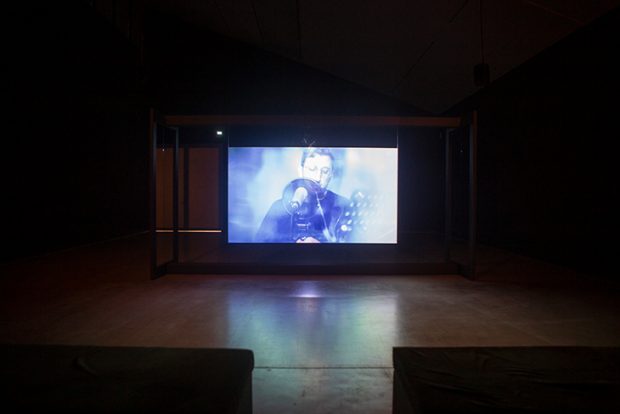
Installation view of ‘Walled Unwalled’ (2018) by Lawrence Abu Hamdan at the Turner Prize 2019 exhibition at Turner Contemporary, Margate. Photo: Stuart Leech; © the artist
The ‘Turner Prize 2019’ is at Turner Contemporary, Margate, until 12 January 2020.
Unlimited access from just $16 every 3 months
Subscribe to get unlimited and exclusive access to the top art stories, interviews and exhibition reviews.

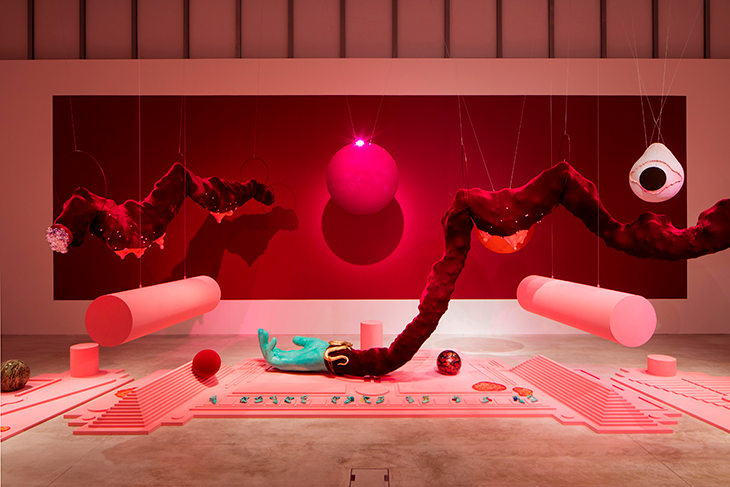
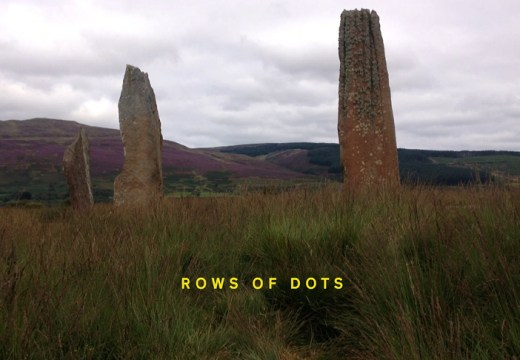
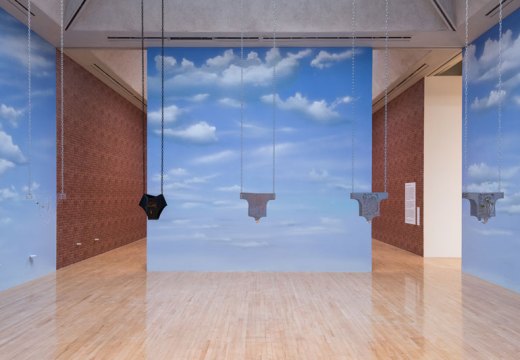
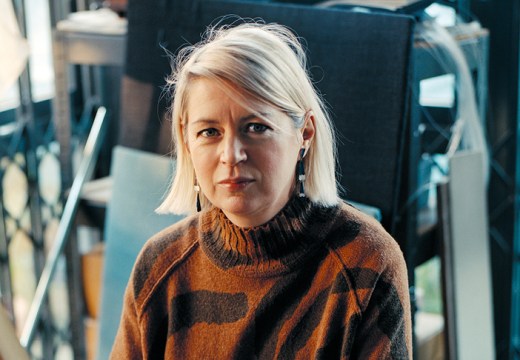









![Masterpiece [Re]discovery 2022. Photo: Ben Fisher Photography, courtesy of Masterpiece London](http://www.apollo-magazine.com/wp-content/uploads/2022/07/MPL2022_4263.jpg)
It’s time for the government of London to return to its rightful home